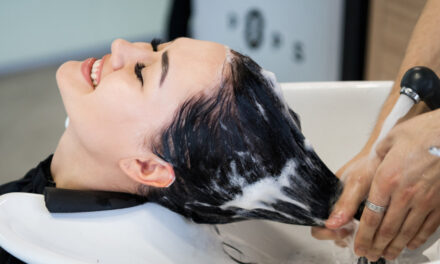
Caring for your color-treated hair is essential to maintain its vibrancy and overall health. When you invest time and money into coloring your hair, following a proper hair care routine is important to ensure the color lasts longer and your hair stays healthy.
Here are some detailed tips and techniques to help you care for your colored hair.
Keeping Color-Treated Hair Healthy
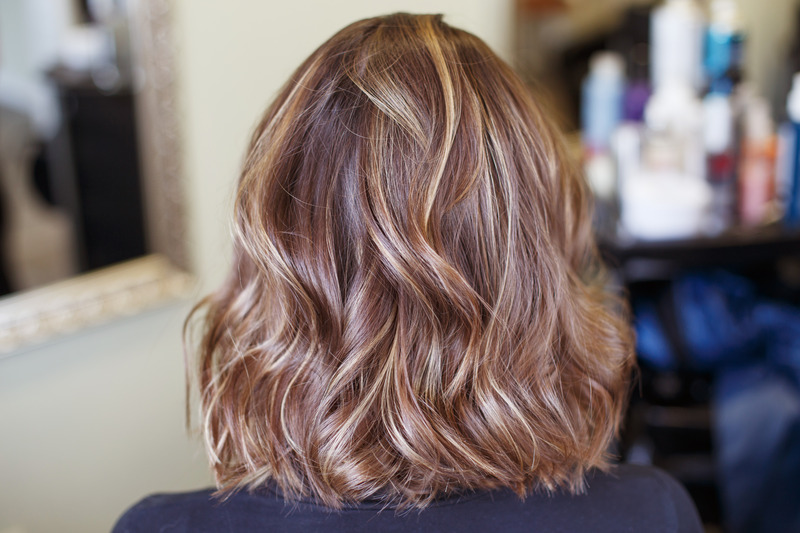
Healthy hair is the foundation for vibrant color. To maintain healthy hair, it’s important to:
1. Avoid Sulfates
Sulfates are cleansing agents found in many shampoos that create lather. However, they can be harsh on color-treated hair and cause the color to fade more quickly.
Opt for sulfate-free shampoos and conditioners specifically formulated for color-treated hair. These products are gentler and help preserve your hair color for longer.
2. Take Supplements
Certain supplements can contribute to the health and vitality of your hair. Consult your healthcare professional to see if hair-healthy supplements like biotin or omega-3 fatty acids suit you.
These supplements can support hair strength and promote shine and overall hair health. Some supplements can promote healthy hair growth.
3. Trim Your Hair Regularly
Regular trims are crucial for maintaining healthy hair, especially if you have color-treated hair. Aim to trim your hair every 6-8 weeks to prevent split ends and breakage. Trimming keeps your hair looking fresh and helps maintain the overall health of your colored locks.
4. Use a wide-toothed comb or a brush with soft bristles
To minimize breakage and damage, use a wide-toothed comb or a brush with soft bristles when detangling or styling your hair. These tools are gentler on your hair, especially when it’s wet or damp.
At-Home Treatment for Color-Treated Hair

In addition to your regular hair care routine, incorporate some at-home treatment tips to keep your color-treated hair in optimal condition.
1. Use Deep Conditioning Treatments
Treat your hair to deep conditioning treatments once a week. Apply a generous amount of deep conditioner for thin or thick hair, focusing on the mid-lengths and ends.
Leave it on for the recommended time and rinse thoroughly. Deep conditioning treatments restore color-treated hair moisture, repair damage, and keep your locks soft and shiny.
2. Apply Leave-in Treatments
Leave-in treatments provide extra moisture, protection, and nourishment to color-treated hair. After washing your hair, apply a small amount of leave-in conditioner or specialized leave-in treatment. Leave it in your hair without rinsing to provide continuous hydration and protection.
3. Condition Your Color-Treated Hair Every Time You Shampoo
Conditioning is essential to restore moisture and lock in color after shampooing. Choose a conditioner specifically designed for color-treated hair. Apply it from mid-length to ends, leave it on for a few minutes, and then rinse thoroughly.
4. Apply a Hot Oil Treatment
Hot oil treatments are excellent for rejuvenating dry and damaged color-treated hair. Put hot oil on your hair when it is wet and dry with a towel. Put a shower cap over it.
Use a hot towel, blow dryer or sit in the sun to make it even hotter. Wait until the oil is cool before washing out with cool water. Hot oil treatments provide deep hydration, nourishment, and added shine to your color-treated locks.
Washing Color-Treated Hair

The way you wash your color-treated hair can significantly impact its longevity and health. Follow these tips to wash your hair properly:
1. Wait a Full 72 Hours Before Washing Your Hair
After coloring your hair, it’s important to give it time to fully absorb the color. Wait for a full 72 hours before washing your hair to ensure the color sets properly and lasts longer.
2. Shampoo Your Color-Treated Hair Less Frequently
Washing your hair too often can strip away the color and natural oils. Aim to shampoo your hair 2-3 times a week, or less if possible. On non-shampoo days, you can rinse your hair with water and condition the ends if needed.
3. Wash Your Hair with Lukewarm or Cooler Water
Hot water can open up the hair cuticles, leading to color fading and dryness. Use lukewarm or cooler water temperatures when washing and rinsing your colored hair. This helps seal the cuticles and keeps the color locked in while maintaining the hair’s moisture balance.
4. Use the Best Conditioner for Color-Treated Hair
After shampooing, always use a conditioner specifically formulated for color-treated hair. These conditioners help restore moisture, lock in the color, and provide essential nutrients to keep your hair healthy and vibrant.
5. Use a Specially Formulated Shampoo for Color-Treated Hair
Choose shampoos specifically designed for such hair to further protect your color-treated hair. These shampoos are gentle, formulated to minimize color fading and provide nourishment to maintain the health and vibrancy of your hair.
6. Use a Color-Safe Dry Shampoo
On days when you need to refresh your hair between washes, opt for a color-safe dry shampoo. This product absorbs excess oil and refreshes your hair without affecting the color of the hair or causing any buildup.
Drying Color Treated Hair
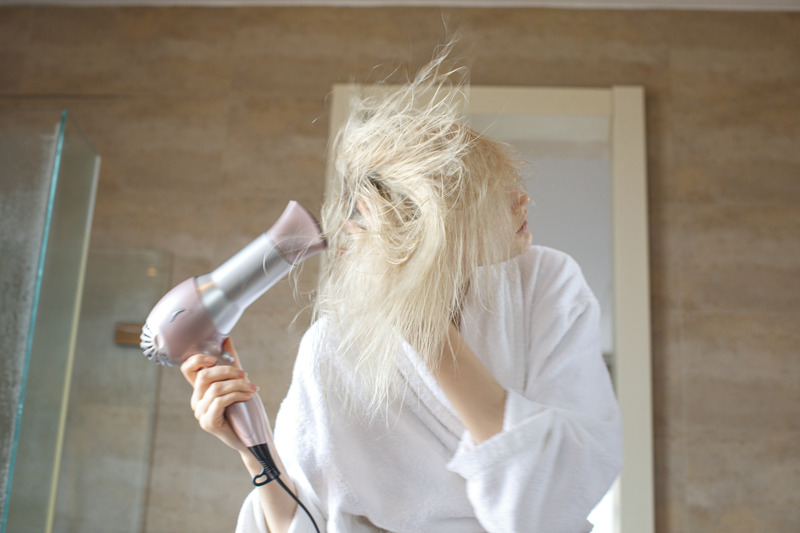
Proper drying and styling techniques can make a significant difference in maintaining the color and health of your hair.
1. Avoid Sleeping With Wet Hair
Sleeping with wet hair can cause tangling and breakage. Let your damp hair air dry before bed, or use a gentle blow dryer on a low heat setting to dry your hair partially before sleeping.
2. Let Your Hair Air Dry
Whenever possible, allow your hair to air dry naturally. Air drying minimizes heat damage and helps preserve your hair’s color and overall health.
Styling Color-Treated Hair
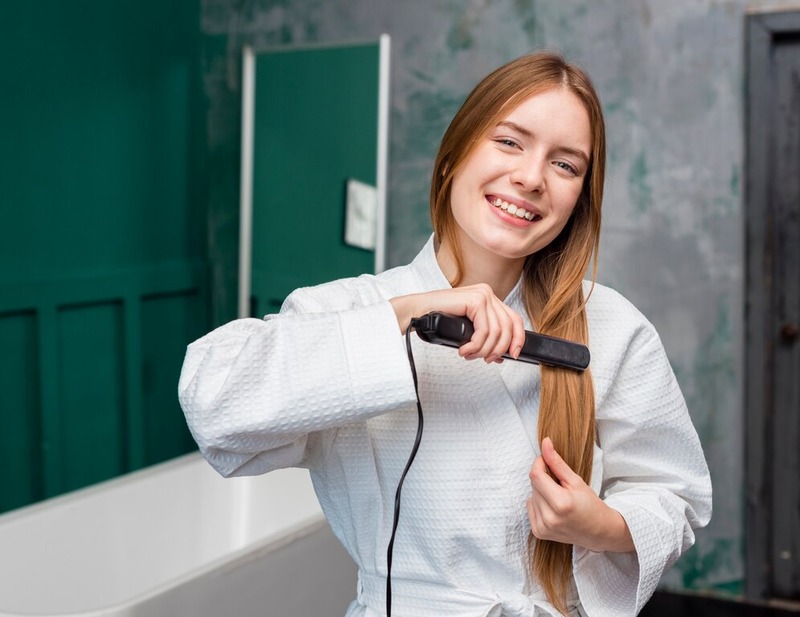
1. Use Heat Protectants
When using heat styling tools like blow dryers, flat irons, or curling irons, always apply a heat protectant spray or serum to shield your color-treated hair from heat damage. Heat protectants form a barrier between your hair and the heat, reducing the risk of color fading and damage.
2. Choose the Right Heat Setting
Adjust the heat setting on your styling tools according to your hair type and the level of heat your hair can tolerate. Lower heat settings are generally safer for color-treated hair, as excessive heat can cause dryness, brittleness, and color fading.
3. Give Your Hair Occasional Breaks from Heat Styling
Excessive heat styling can lead to dryness and damage. Embrace natural styles or opt for heatless styling methods such as braids, buns, or twist-outs to give your hair a break from heat. This helps maintain the health and integrity of your color-treated locks.
Maintaining Color and Preventing Fading
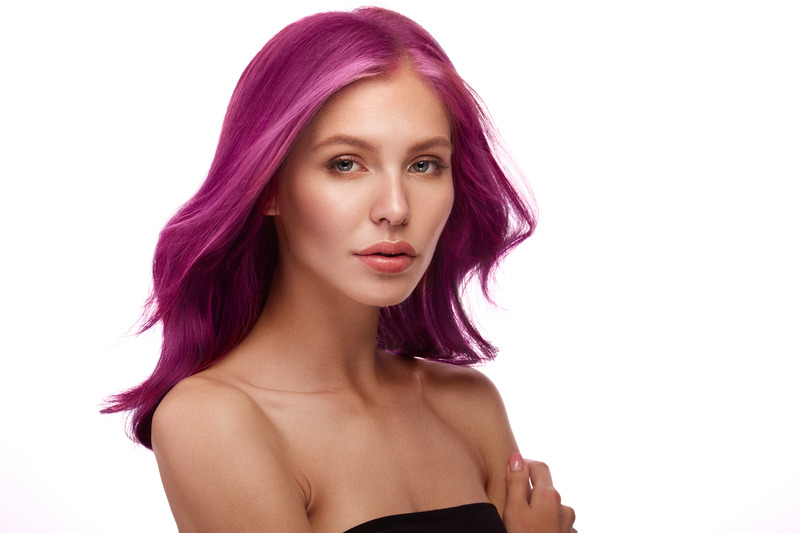
Maintaining the color and preventing fading in your hair is crucial for keeping it vibrant and fresh. Here are some tips to help you achieve that:
1. Avoid Exposure to Chlorine and Saltwater
Chlorine and salt water can strip away the color molecules in your hair, causing fading and dullness. If you’re swimming in a pool or the ocean, protect your hair by wearing a swim cap or applying a leave-in conditioner before getting in the water. Rinse your hair thoroughly afterward to remove any residual chlorine or salt.
2. Use UV Protection Products for Hair
Just like your skin, your hair can be damaged by the sun’s UV rays which can fade hair color. Look for hair products that contain UV filters or use leave-in sprays or serums specifically designed to protect color-treated hair from UV damage. These products create a barrier that shields your hair from the sun and minimizes color fading.
3. Minimize Washing Frequency
Washing your hair frequently can strip away the natural oils that help protect and nourish your dyed hair. When you do shampoo, use lukewarm water and a color-safe shampoo formulated for color-treated hair.
4. Apply Color-Enhancing Products or Gloss Treatments
Color-enhancing products, such as color-depositing shampoos or conditioners, can help revive and intensify your hair color between salon visits. These products deposit a small amount of color onto your hair, refreshing its vibrancy.
Additionally, consider getting gloss treatments at the salon. Gloss treatments add shine and enhance the color of your hair, making it look more vibrant and glossy.
toner5. Avoid Harsh Treatments like Perming or Relaxing
Chemical treatments like perming or relaxing can weaken and damage your hair, leading to color fading and breakage. If you have color-treated hair, avoiding these harsh treatments is best. Instead, opt for gentler styles and treatments on your hair, such as heatless curling methods or natural hair texturizing techniques.
Final Thoughts
In conclusion, maintaining the color and vibrancy of your color-treated hair requires consistent and proper care. By following the tips mentioned above, you can extend the life of your hair color and keep it looking beautiful.
It’s important to note that seeking professional advice from a hairstylist or colorist is always beneficial. They can provide personalized recommendations based on your hair type, color, and specific needs. Also, don’t be afraid to experiment with new techniques or products to find the best for you. Every individual’s hair is unique, and what works for one person may not work for another.
At Vitamins Revive, we understand the importance of maintaining color-treated hair and offer a range of hair care products specifically formulated for color-treated hair. Our Vitamins Revive line is designed to nourish and protect color-treated hair, keeping it healthy and vibrant. Check out our range of products and find the perfect fit for your hair care routine.
Remember, taking care of your color-treated hair is an ongoing process that requires patience and consistency. With the right care, you can enjoy your vibrant hair color for longer periods and confidently rock your desired look.
FAQs
What is color-treated hair?
Color-treated hair refers to hair that has been dyed or chemically treated with color to change its natural shade. This can include permanent hair dyes, semi-permanent dyes, highlights, balayage, or other coloring techniques.
What happens if I wash my hair 24 hours after dying it?
Washing your hair within the first 24 hours after coloring can potentially cause your hair color to fade quicker. During the initial 24-hour period, the hair cuticles remain open, allowing the color molecules to fully penetrate and adhere to the hair shaft. Washing your hair too soon can disrupt this process and result in some color loss.
What happens to your hair after coloring?
After coloring your hair, several changes occur. The hair cuticles are lifted to allow the hair dye itself to penetrate the hair shaft, and the color molecules bond with the hair proteins. This can temporarily weaken the hair structure and make it more porous, affecting its texture and moisture balance. Depending on the dye used and your hair’s condition, coloring can lead to varying degrees of dryness, brittleness, or frizz. It is important to follow a proper hair care routine and use products specifically formulated for color-treated hair to maintain health and vibrancy.



